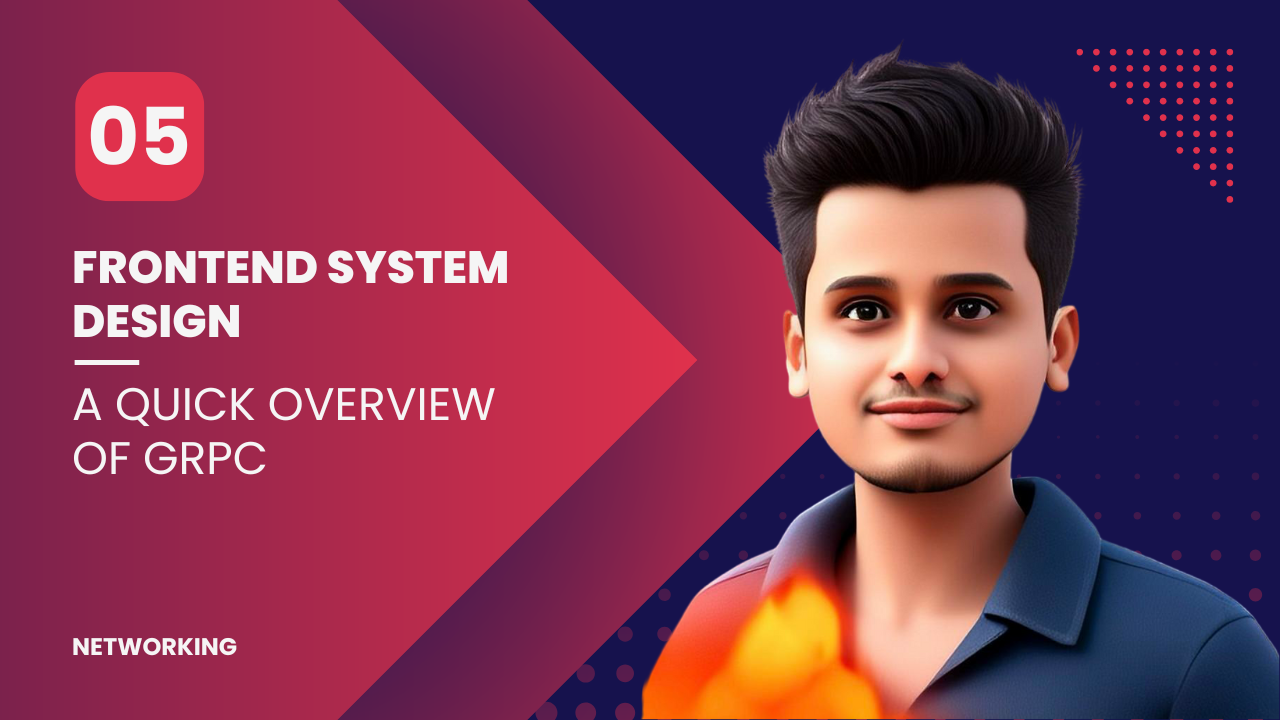
It's kind of like a sibling to REST API or GraphQL, enabling communication with the server in a unique way. RPC stands for Remote Procedure Call, and the "g" in gRPC stands for Google, as it was created by Google.
Let's understand it now:
Suppose there are two machines—one is the client (any machine) and the other is the server (another machine). In the end, when we call an API, it executes a function on the server. With RPC, instead of making a traditional API request, the client can directly call a function on the server. Below is the architecture diagram, and we will discuss each terminology in detail.
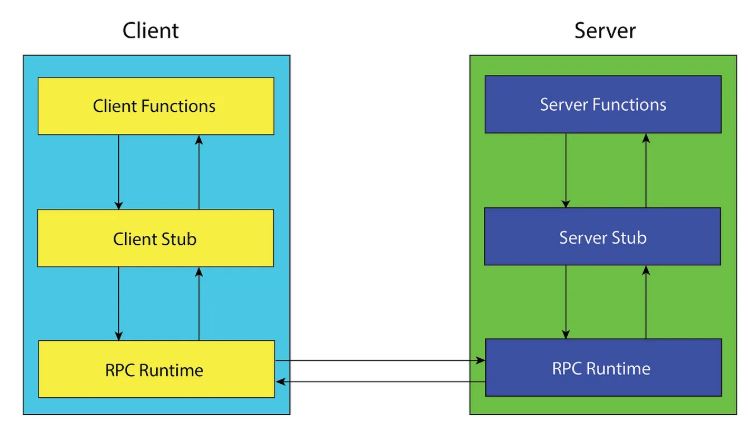
In REST APIs, data is transferred in JSON format, but in gRPC, it happens using Protocol Buffers (Protobuf), which is an IDL (Interface Definition Language). To use gRPC, we need HTTP/2.
Just like REST APIs send serialized data over the network, gRPC also transmits protocol-serialized data. However, gRPC maintains a single long-lived connection and supports bidirectional streaming.
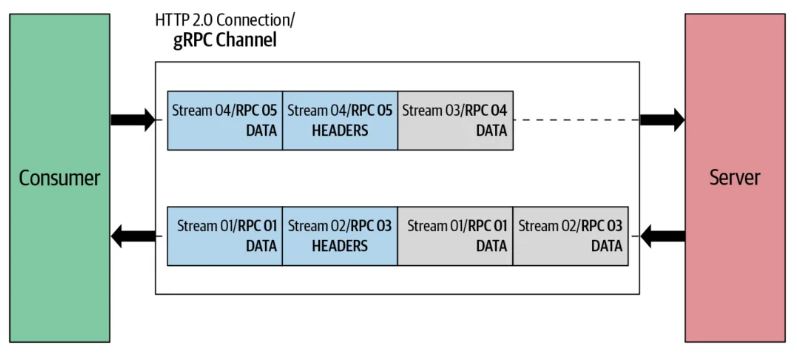
So, referring to the screenshot above, once an HTTP/2 request is made using gRPC, bidirectional data flow happens. Each time we call a server function, a bidirectional data flow occurs, and the connection ends after the response.
We already discussed that gRPC uses Protocol Buffers (Protobuf) instead of JSON. Now, let’s understand Protocol Buffers and how encoding and decoding take place.
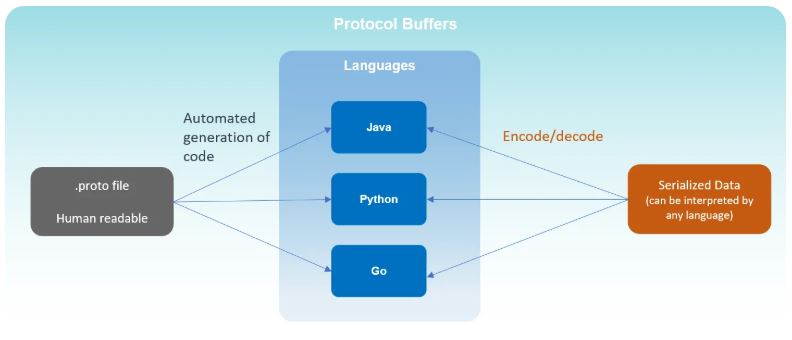
Protocol Buffer (ProtoBuf) is developed by Google.
- ProtoBuf is an IDL (Interface Definition Language) and also provides serialization and deserialization.
- It supports binary data transfer, unlike REST APIs, where we use
.json(), in gRPC, we use.proto(also called proto3). - The .proto file defines the request and response structure. This file enables code conversion, making it compatible with multiple languages.
- The response can be deserialized in any language, which makes gRPC highly flexible.
Honestly, this concept is a bit confusing, but we’ll explore it further to understand it better.
Benefits of gRPC
- Requires less CPU resources.
- Faster on mobile devices due to efficient serialization.
gRPC is mainly used for server-to-server communication, but we will also see how to use it in a browser. Since a browser acts as a client machine, we need a gRPC client that interacts with a gRPC server to call functions.
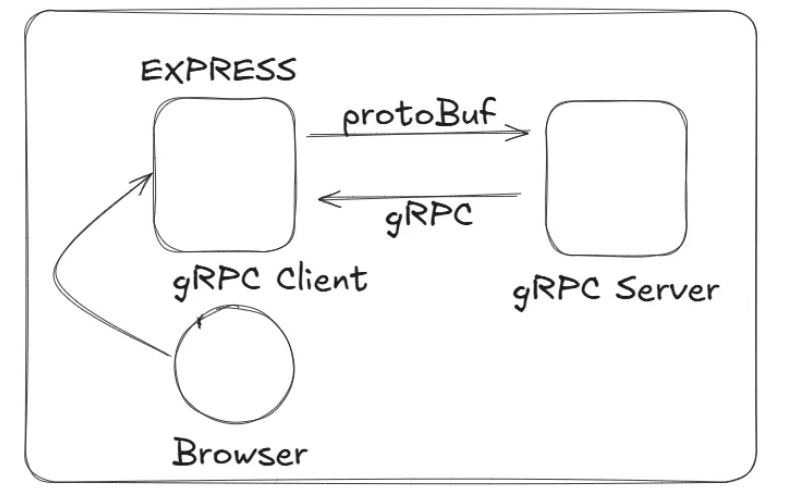
Let's Code
Here is the repo link: gRPC-first-setup
You can either clone the repo or follow the documentation to set up the client and server. If you haven’t used gRPC before, it might feel a bit complex at first, but at least try it once, as I did. Something is better than nothing 🙂
Comparison with REST API
- In REST API, we use HTTP/HTTPS, but in gRPC, we use HTTP/2 as the default transport protocol.
- REST APIs use JSON, whereas gRPC uses Protocol Buffers.
- No standard language is required for REST APIs, but gRPC enforces ProtoBuf IDL as a standard.
- REST APIs transfer data in JSON/XML/Text, while gRPC uses binary serialization for efficiency.
- JSON is more flexible, but ProtoBuf ensures a strict contract between the client and server.
- REST APIs often rely on third-party code generation tools, whereas gRPC provides automatic code generation.
Advantages and Disadvantages
Advantages
✅ 10x faster compared to REST API calls
✅ Better security since it uses HTTP/2
✅ Bidirectional streaming support
✅ Automatic code generation
✅ Language-agnostic (Define proto once and use it in any language)
✅ Service discovery support
✅ More secure communication
Disadvantages
❌ Not human-readable (Uses binary data instead of JSON)
❌ Limited browser support
❌ No edge caching (Due to the use of POST requests)
❌ Steeper learning curve compared to REST APIs
Hey your feedback is required for me , please give this repo a star 🌟 if you liked the blog if you want to contribute in it please feel free to fork , You can see github link on top right corner of top bar or click here
Thank you so much for reading. If you found it valuable, consider subscribing for more such content every week. If you have any questions or suggestions, please email me your comments or feel free to improve it.
I am waiting for your feedback, See you in next episode,
Thanks 👋🏻

Written by Rahul Aher
I'm Rahul, Sr. Software Engineer (SDE II) and passionate content creator. Sharing my expertise in software development to assist learners.
More about me